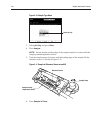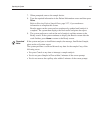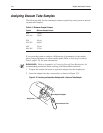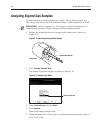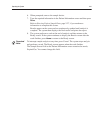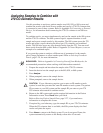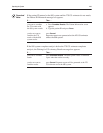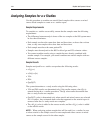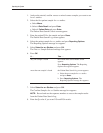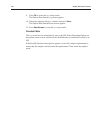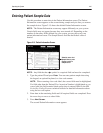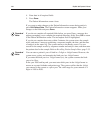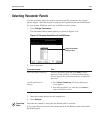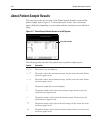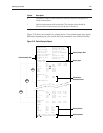
Analyzing Samples for aĆv Studies
Use this procedure to combine an arterial blood sample with a venous or mixed
venous blood samples to create an a-v studies report.
Sample Requirements
To complete a-v studies successfully, ensure that the samples meet the following
requirements:
S The difference between analysis times of the two samples at the 800 system must
be less than 60 minutes.
S Each sample can have the same draw date and draw time, no draw date or draw
time, or only one sample with a draw date and draw time.
S Each sample must have the same patient ID.
S Samples must be analyzed on the 800 for blood gas and CO-oximeter values.
S You cannot combine results using a sample that was already combined with
another sample. For example, you cannot combine one arterial sample with two
different venous samples.
Sample Results
Samples analyzed for a-v studies can produce the following results:
S ctO
2
(a-v)
S ctO
2
([a-v]/a)
S VO
2
S DO
2
S Qsp/Qt(T)
The system determines a-v study results using the following rules:
S VO
2
and DO
2
results are determined only if the cardiac output value (Qt) is
entered during the a-v studies procedure. The Qt value cannot be entered after
the a-v study results are complete.
S Qsp/Qt(T) value is determined only when arterial and mixed venous are selected
for a-v studies. Any estimated shunt value that appeared on the arterial report is
removed after the a-v study results are complete.
S The ctO
2
(a) value is added to the venous results, and the ctO
2
(v) value is added
to the arterial results.
NOTE: When analyzing patient samples that will be used for a-v studies, be sure
to select arterial as the sample source for one sample and either venous or mixed
venous as the sample source for the other sample.



